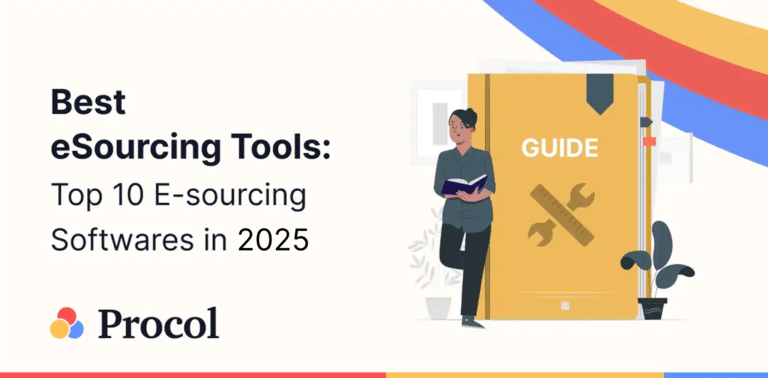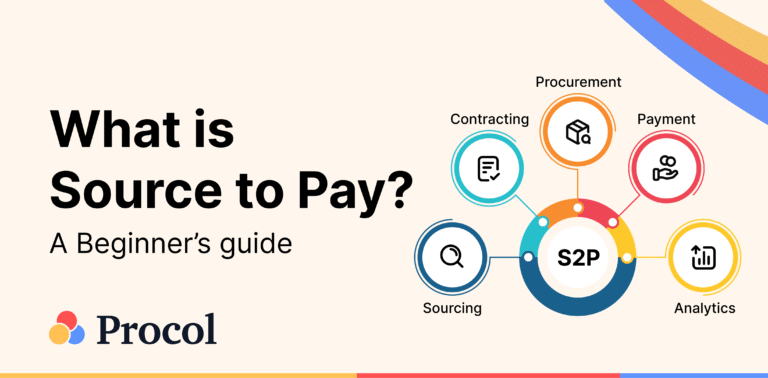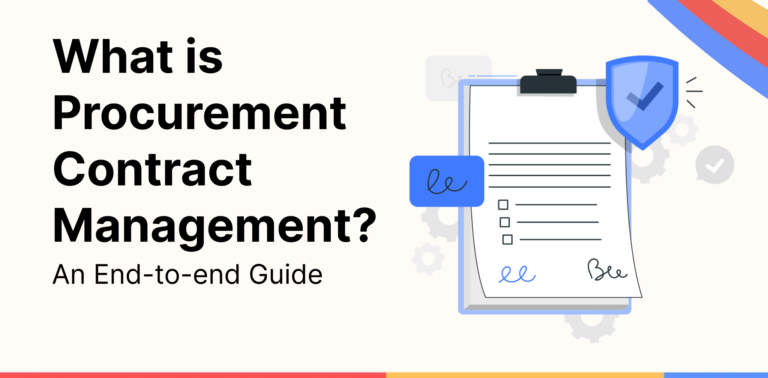Procol • February 24, 2025
Procurement vs Sourcing: End-to-end Guide

Introduction
The landscape of modern business is constantly changing, which means that companies need to streamline their processes and maximize efficiency. The competition is so intense that businesses must seek innovative solutions that improve supply chain agility to thrive. In such a situation, innovation is not just an option but a necessity.
Leaders need to breathe a digital-first life into the otherwise mundane and manual legacy operations to grow and gain a sustainable advantage. Interestingly, sourcing and procurement in supply chain management are two such business operations that can be developed into a cutting-edge operating model with advanced capabilities.
Are sourcing and procurement the same thing?
Sourcing and procurement in supply chain management are undertaken in the best interest of the organization.
They are two distinct processes, but professionals often refer to them interchangeably. In fact, many enterprises consider them synonymous, although, there is differentiation between the two processes. Sourcing focuses solely on suppliers, while procurement focuses on both purchasing and suppliers.
But, what exactly is sourcing and procurement? What is the difference between sourcing and procurement? What are the complex processes involved in sourcing and procurement? Lastly, can any next-generation platform digitally help with procurement and sourcing functions? Let us dive deep into it all.
What is sourcing?
Sourcing is a subset of procurement that involves finding the best supplier for goods and services, vetting them, and selecting them for a value in the organization’s best interest. Effective sourcing requires a comprehensive analysis of the total cost of ownership, supplier capabilities, and compliance with the contract and ethical standards.
Sourcing management as a process also includes-
- Evaluating the market
- Developing an entire procurement method
- Bargaining the T&C of the purchase
Why is sourcing important?
The importance of sourcing cannot be overstated. It results in better quality products, increased efficiency, and higher profitability. It is a critical step that must be incorporated to provide high-quality services.
Therefore, the primary reasons why optimizing sourcing is given so much importance are as follows-
- Long-term cost-saving: Sourcing saves organizations considerable money by selecting suppliers that provide the best value at the lowest prices. It positively impacts their bottom line, leading to a domino effect of benefits.
- Better stability: A strong, mutually beneficial relationship established with suppliers is one of the significant benefits of the sourcing process. Organizations can easily find the ideal match that aligns with their objectives by maintaining up-to-date and comprehensive supplier profiles. The organization can build a stable partnership that creates the maximum value by doing so.
- Increased Competitiveness: Sourcing unlocks an organization’s full potential by optimizing performance and bolstering the sustainability of the supply chain. It ensures the competition doesn’t get the upper hand.
Now, before we leap into the sourcing process, it is essential to have a strategy in place. The best way to achieve this is through strategic sourcing.
What is strategic sourcing?
Strategic sourcing in supply chain management is a targeted approach to procurement activities. As a process, it goes beyond the conventional cost-cutting measures and delves deeper into the footprint of the sourcing process. Organizations analyze past spending, contract and supplier performance, etc., and use cost-saving techniques to identify and prioritize opportunities for savings. Additionally, strategic sourcing helps organizations stay on track and mitigate any losses due to supply chain disruptions, regulatory penalties, or contract risks.
Steps in Sourcing
Steps in sourcing include:
-
Outline the business’s purchasing needs: To outline the business’s purchasing needs, the sourcing process begins by understanding the company’s procurement requirements. It starts with identifying cost reduction opportunities by tracking the company’s current expenses, comparing the expenses with its set budgets, and thereby identifying areas that can be re-evaluated. This allows the business to redefine its purchasing strategies and support its business objectives.
-
Market Assessment: An in-depth market assessment is a vital step in the sourcing process. This process involves a thorough research of competitors, identifying key suppliers, and the potential risks and opportunities within the marketplace. Several factors influence costs, such as raw materials, labour, and transportation costs. Once extensive market research is conducted, the business thereafter can formulate efficient sourcing strategies and make well-informed decisions.
-
Identify and review potential suppliers: This stage involves identifying suppliers who can meet the requirements outlined during the purchasing needs assessment. Key considerations at this stage include several factors such as pricing, quality, delivery timelines, production capacity, payment terms, and relevant credentials to mitigate any risks involved. Also, maintaining multiple viable supplier options is advisable to eliminate any chances of delivery failures or oversights.
-
Supplier selection: This process involves reviewing submitted RFIs (Request for Information), RFPs (Requests for Proposal), or RFQs (Requests for Quote). After shortlisting the most suitable candidates, negotiations will begin to finalise favourable pricing, payment terms, delivery schedules, and additional benefits. Once the preferred, credible supplier is finalised contracts are drafted, reviewed, authorised and executed by representatives from both parties.
-
Supplier onboarding and relationship management: Once the selection process is complete, it is then important to establish a good relationship with them to ensure that they continue to meet the organisation’s needs. It is important to keep analysing, monitoring and reviewing their performance using KPIs to ensure that they add the desired value to the organisation’s goals.
Example of sourcing (Case study)
Prominent footwear company saved 4.44% of sourcing spend by turning to strategic sourcing.
What is procurement?
The procurement process includes several key stages of various actions involved in acquiring goods and services essential to a company’s operations. It starts with identifying the business needs, outlining specific requirements, conducting in-depth market research, evaluating multiple suppliers, negotiating contracts, monitoring and managing supplier relationships. Procurement procedure is an integral part to supply chain management, there are also many interconnected tasks that are aimed at ensuring a consistent and reliable flow of inputs and supplies to the organisation.
Why is procurement important?
Procurement is a crucial process undertaken in every business operation facilitating timely and efficient acquisition of essential items and services, thereby enabling successful project and process execution.
Below is a list of benefits the activity offers:-
-
Cost-effective solution: By identifying suitable suppliers and negotiating prices this step of procurement helps companies, especially those with limited budgets save money on purchases.
-
Quality assurance: Procurement ensures quality by selecting reliable suppliers who meet the business’s standards and comply with industry regulations.
-
Risk mitigation: Through evaluating suppliers’ financial stability and reputation, and diversifying sources, procurement will help in mitigating risks thereby preventing potential losses.
-
Better supplier relations: Procurement helps companies build and maintain strong supplier relationships by closely collaborating with them. That enables enterprises to drive innovation and gain a competitive edge. This in return leads to improved communication, better pricing, and faster delivery times.
-
Improve efficiency: Organizations can increase overall business productivity by automating procurement tasks, implementing e-procurement systems, and optimizing procurement strategies with data analytics.
Steps in procurement
The procurement management process involves multiple steps, each bearing risks and opportunities that require careful assessment.
Below is how the steps in procurement entail:
- Sourcing is the process in which an organization identifies its requirements and begins searching for the appropriate suppliers to meet those needs. This process includes several steps, such as
- Forecasting needs: The procurement team identifies and documents the requirements, specifications, quantity, and desired quality of the goods or services required. It can be for new or previously ordered items that need to be restocked.
- Market analysis: After gathering the requirements, the team analyzes the market conditions to understand the availability of suppliers and prevailing pricing strategies. It involves researching potential suppliers, understanding their market share, and their reputation in the industry.
- Supplier identification: A list of potential suppliers is created to meet the specified business requirements. This involves contacting suppliers, participating in trade shows, or using digital tools and platforms that connect buyers with suppliers.
- Supplier evaluation and shortlisting: The potential suppliers are evaluated based on various criteria such as cost, quality, capacity, delivery time, and past performance. This is often done through a Request for Information (RFI) process.
- Bidding and negotiation: The shortlisted suppliers are invited to submit their bids through a Request for Proposal (RFP) or Request for Quotation (RFQ) process. After submitting bids, negotiations may occur to finalize pricing, terms, and conditions.
- Vendor management involves maintaining and optimizing supplier relationships throughout the contract. There are several aspects of vendor management, including:
- Supplier onboarding: This is a critical first step in the vendor management process. It ensures that selected suppliers are formally onboarded, their details are set up in the organization’s systems, the necessary documentation is in place, and communication and reporting protocols are established.
- Relationship management: Maintaining a positive and productive relationship with suppliers is crucial; this is where relationship management comes in. Regular meetings, performance reviews, and open communication channels help build trust and ensure issues are swiftly addressed and resolved.
- Performance evaluation: Regular performance evaluation ensures that the organization receives the value it expects from its suppliers. It is undertaken against agreed-upon metrics and Key Performance Indicators (KPIs).
- Risk management: Identifying and mitigating various risks associated with supplier relationships is the final critical aspect of vendor management. This could involve monitoring the supplier’s financial stability, conducting procurement audits, ensuring they adhere to compliance and regulatory requirements, and developing contingency plans in case of supplier failure.
- Contract management is crucial for every business. It involves the administration of contracts made with customers, vendors, partners, or employees to ensure fair, reasonable, and beneficial practices for all parties involved. It includes:
- Contract creation and approval: The first step involves creating a comprehensive agreement that outlines both parties’ terms, conditions, and expectations. This step is critical to ensure that all parties involved understand their roles and responsibilities, minimizing potential misunderstandings or disputes.
- Contract execution and monitoring: Once the contract is approved and signed, it must be executed according to its terms. Continuous monitoring ensures that both parties adhere to the contract, prevent potential breaches, and allow for timely resolution of issues that may arise.
- Contract renewal or termination: Towards the end of the contract term, an informed decision needs to be made that best serves the business’s interests regarding the renewal or termination of the contract. It involves carefully evaluating the supplier’s performance, the value delivered, and the ongoing need for their services or products.
Example of procurement (Case study)
Modernizing the procurement process delivered 3% savings for leading textile manufacturers.
What comes first, sourcing or procurement?
In the procurement vs sourcing debate, sourcing is the stage before procurement. As explained before, sourcing involves finding suppliers, assessing capabilities, and negotiating contracts.
What is the difference between sourcing and procurement?
Sourcing acts as an enabler for procurement. In small businesses, sourcing and procurement departments are often combined into a single purchase department. Some traditional businesses still use terms such as sourcing and procurement with the same intent. That department is responsible for all the research on sellers, services, suppliers, costs, etc.
However, as the business grows, sourcing and procurement management get divided to reduce errors, improve efficiency, save time, and benefit from all angles.
Here’s the tea on the sourcing vs procurement comparison:
| Sourcing | Procurement |
|---|---|
| Sourcing focuses on everything from suppliers, vetting and contracting suppliers and maintaining a healthy chain of suppliers for business needs | Procurement focuses on obtaining goods or services required for the business to operate |
| Sourcing focuses on the who that makes the supply possible | Procurement focuses on the what of supplies |
| The main objective of sourcing is to reduce costs and build a resilient supply chain | The main objective of procurement is to ensure a steady flow of input and supplies to the organization |
| Sourcing evaluates supplier and supply chain risks | Procurement manages internal and external risks |
| Sourcing includes reviewing documents like (Request for Information), RFPs (Request for Proposal), or RFQs (Requests for Quote) | Procurement goes beyond RFIs, RFPs, and RFQs to POs, invoices, and payments |
Hope by now we’ve helped you understand the stark difference between the sourcing and procurement process.
How can sourcing-procurement software help with both procurement and sourcing functions?
Currently, sourcing and procurement are an extensive part of doing business. However, the manual process of sourcing and procurement is complex. It is a minefield consumed with varied complexities, constant negotiations, managing complicated contracts, multiple vendors, unknown risks, ensuring legal compliance, and processing transactions.
However, by using sourcing-procurement software and automating the said operation, sourcing and procurement professionals can increase transparency, mitigate risk, and help businesses navigate their most significant challenges related to time and costs.
Here’s how a single platform offering a sourcing procurement suite helps drive meaningful benefits and deliver tangible value to those still grasping the difference between sourcing and procurement.
- Centralised dashboard: Collect, create, and manage all your workflows, orders, invoices, and the entire purchase data in one centralized location.
- Streamlined process: An all-in-one software that automates your sourcing workflow by streamlining purchase requests and approvals – ensuring speedy procurement.
- Optimal flexibility: With better visibility and control, quickly adapt to your purchasing needs, industry type, and company size.
- Long-term cost saving: Reduced buying cycles and eccentric spending thanks to tailored workflows improve the bottom line.
- Increased supply chain sustainability: It also provides precise inventory management that helps in eliminating shortages and over-stocking
- Faster ROI: An accurate, real-time report ensures data-driven decisions that propel your business forward.
- Higher visibility: Drive greater value and eliminate pain points by understanding and analysing the transparency of your purchasing activity.
- Greater collaboration: It is extremely easy for procurement professionals, approvers, managers, and finance teams to collaborate internally at a multi-level and externally with suppliers.
Conclusion
By now we’ve established the difference between procurement and sourcing and how critical sourcing and procurement in supply chain management are. Interestingly, over the next decade, supply chains will strive to focus more on innovation owing to new technologies to mitigate as much risk as possible. With the promise of digitally-enabled procurement and sourcing software, new capabilities will be created to stay in front of change, enabling more efficient operations.
Explore more from Procol
Discover expert tips, how-to guides, industry insights, and the latest procurement trends.

Best eSourcing Tools: Top 10 eSourcing Software in 2025
Discover top 10 e-sourcing tools and esourcing platforms necessary for efficient...

What is Source-to-pay in 2025? An Ultimate Guide
Source to pay is the process of sourcing vendors to procure...

End-to-End Guide to What is Procurement Contract Management?
Wondering what is procurement contract management, then this end-to-end guide explains...












